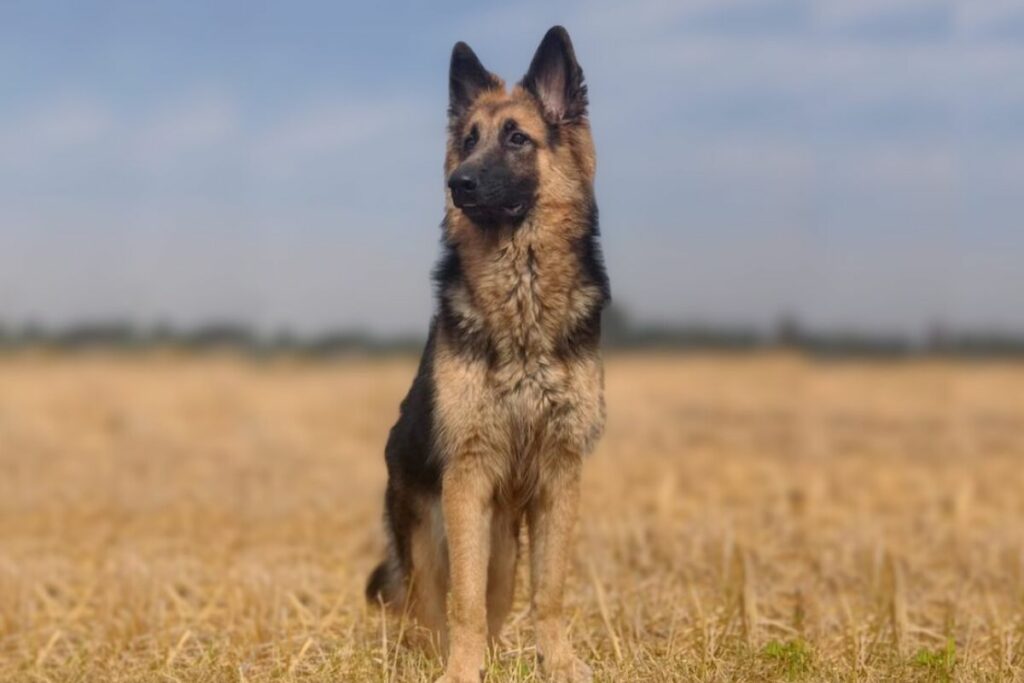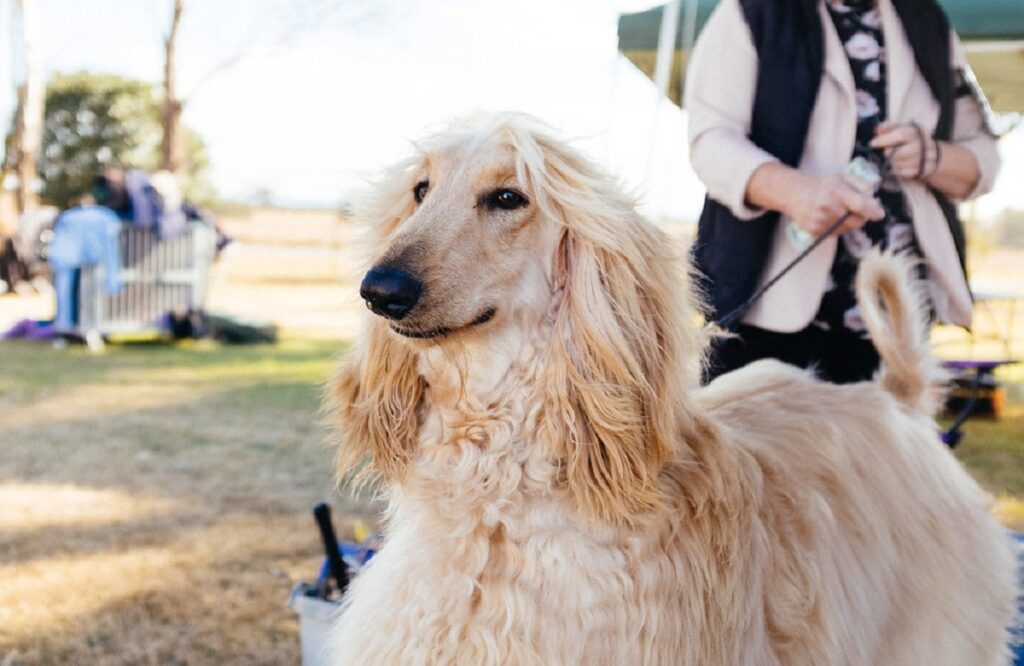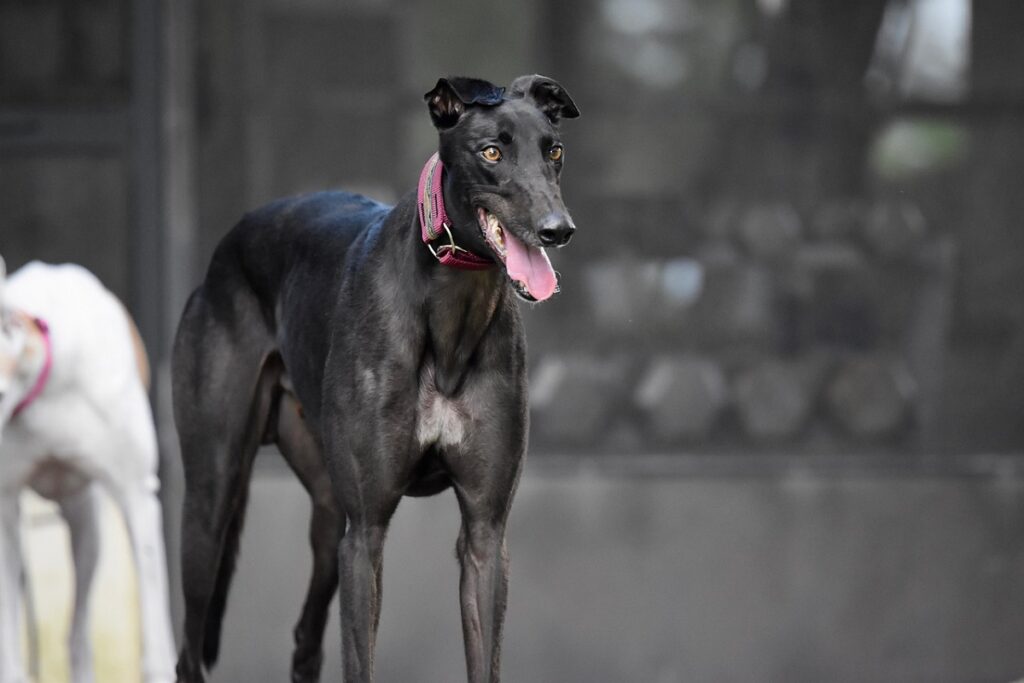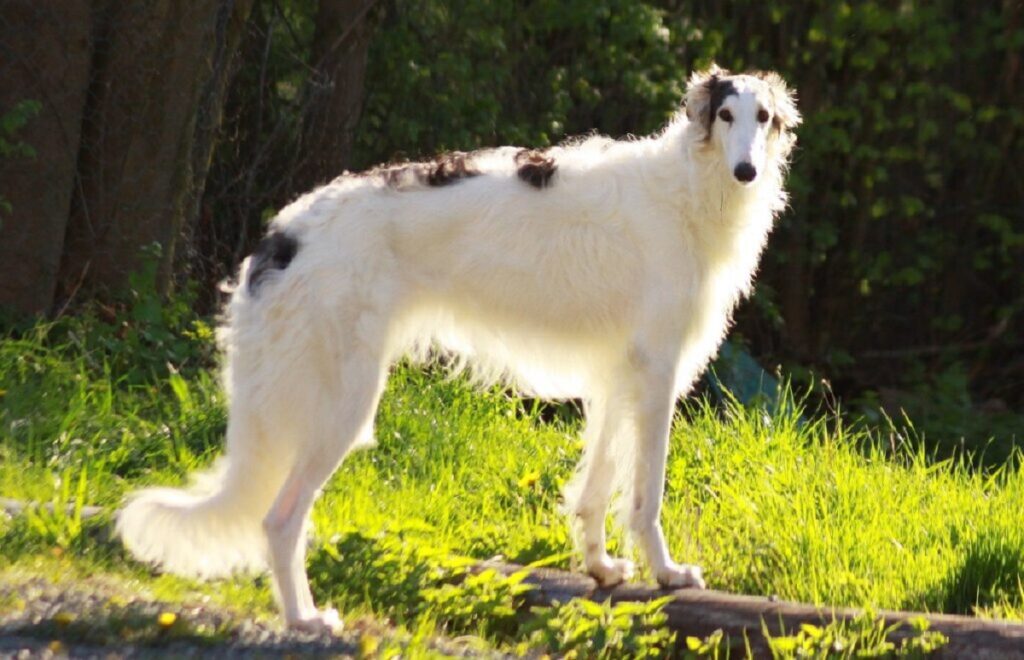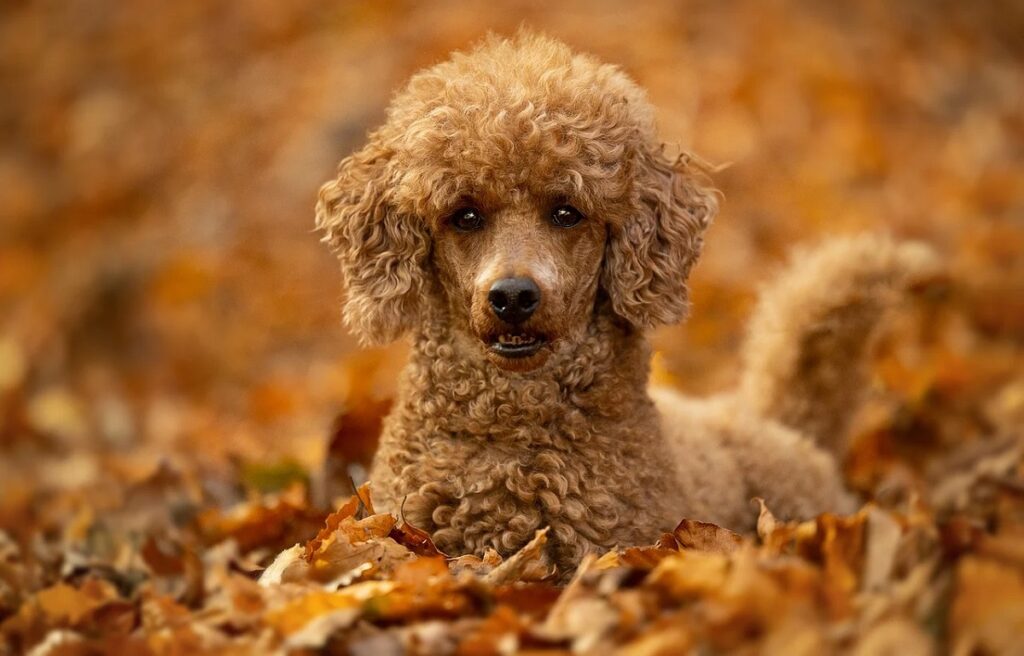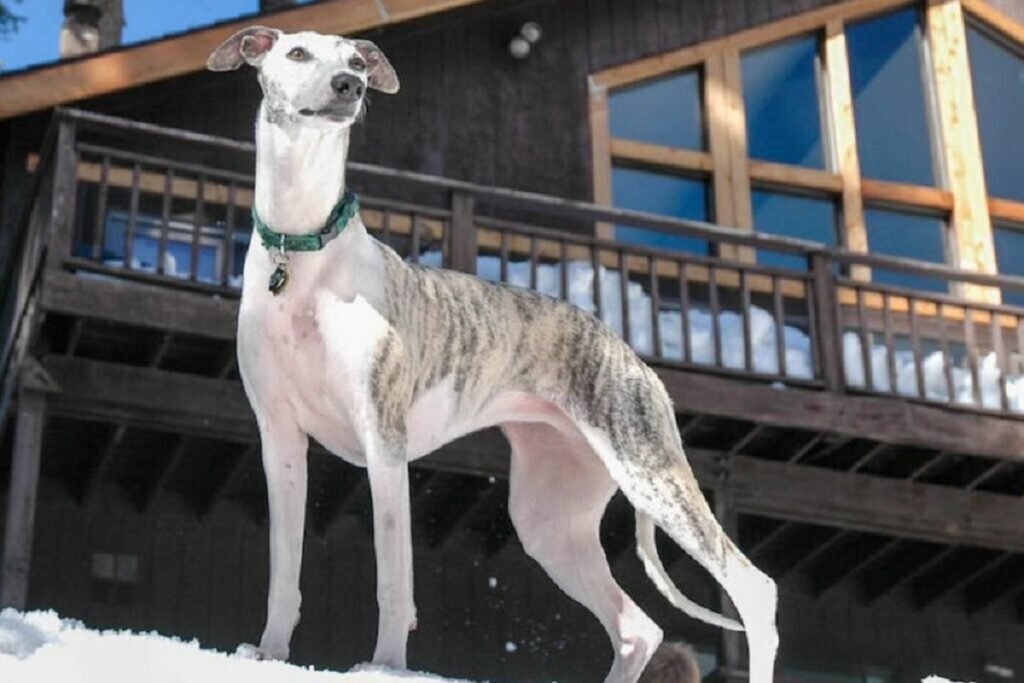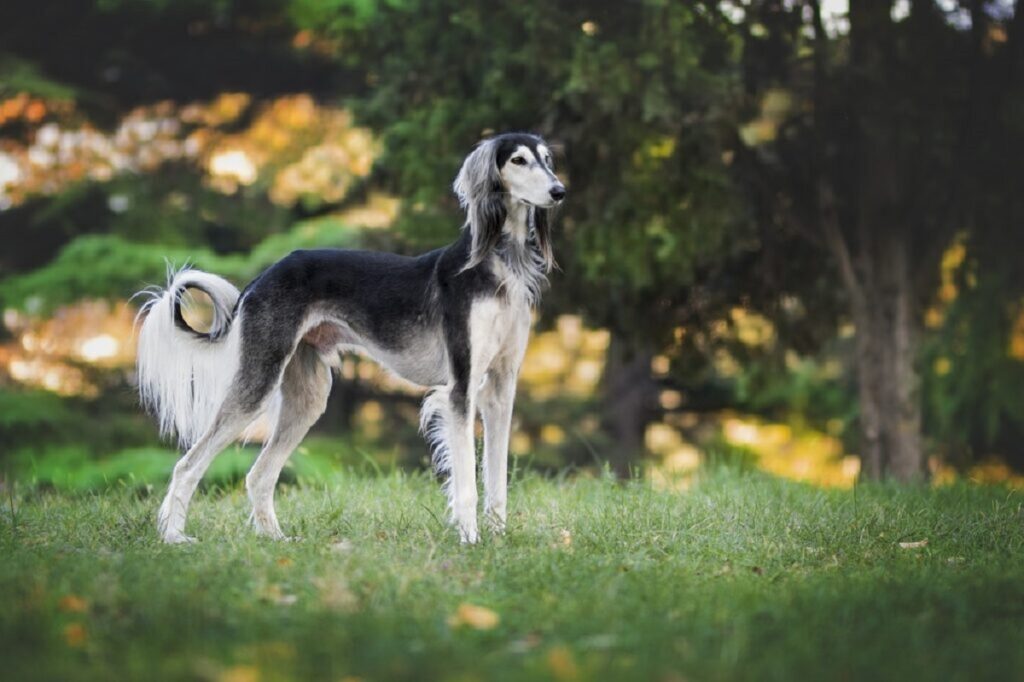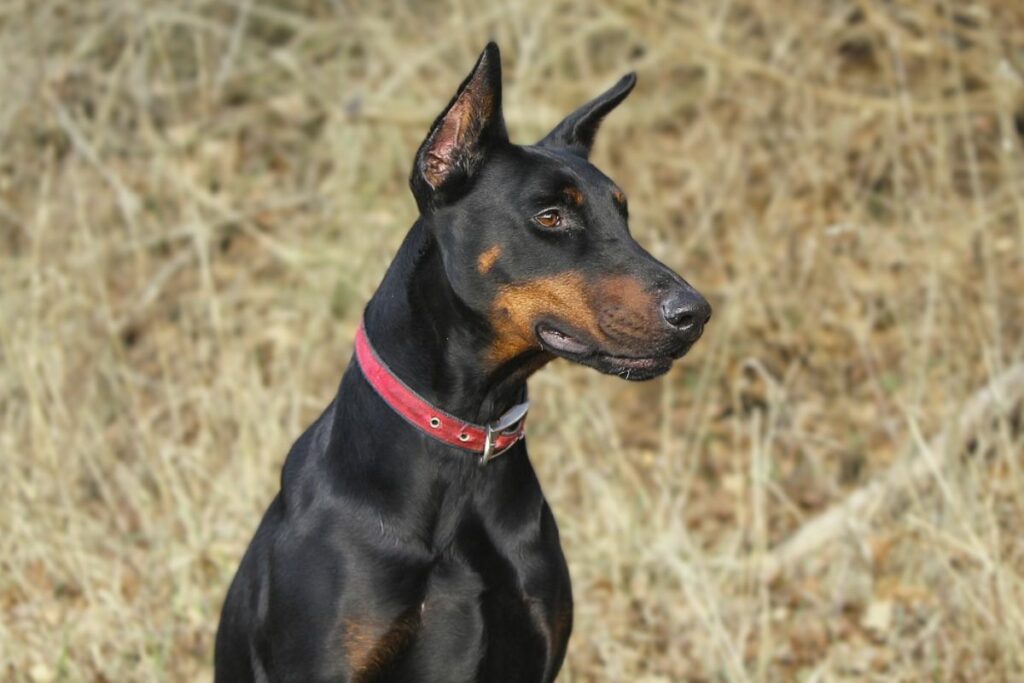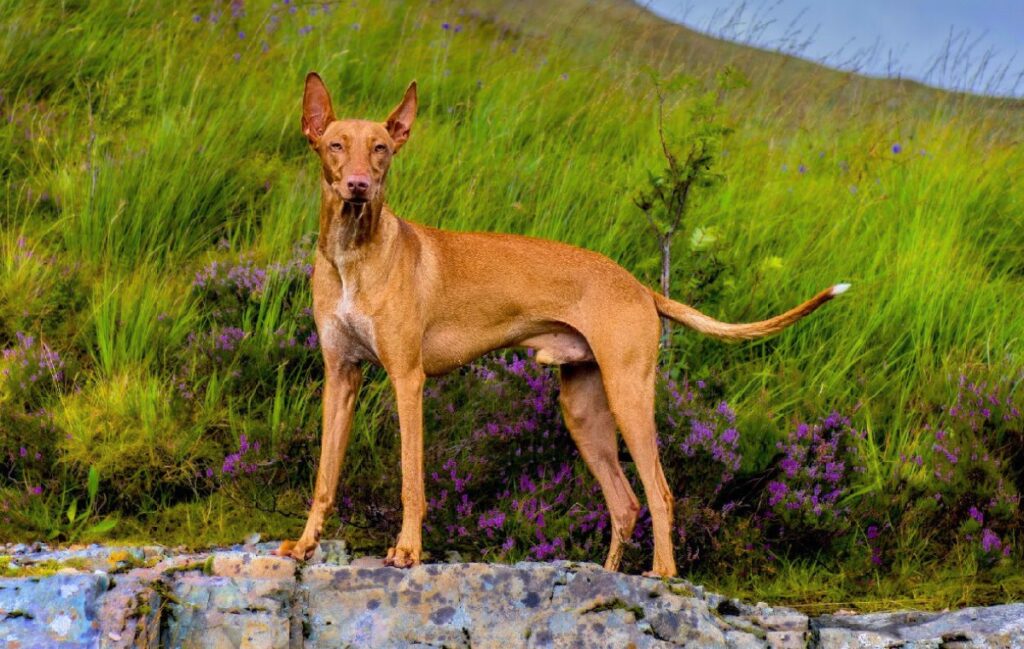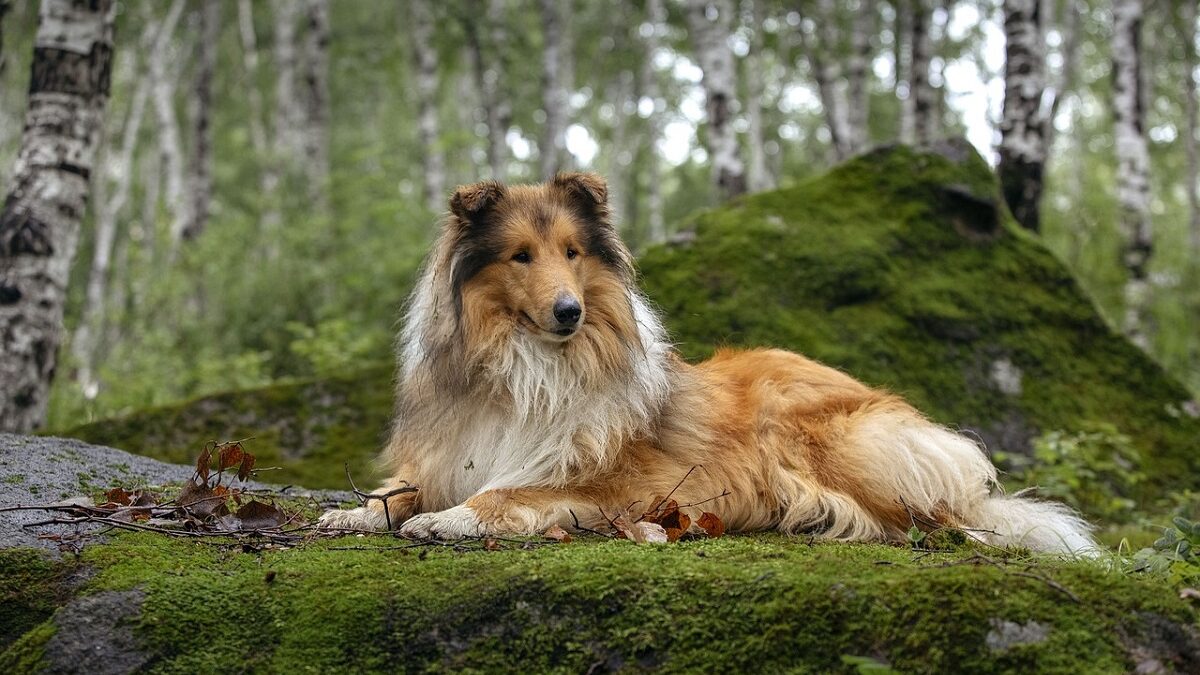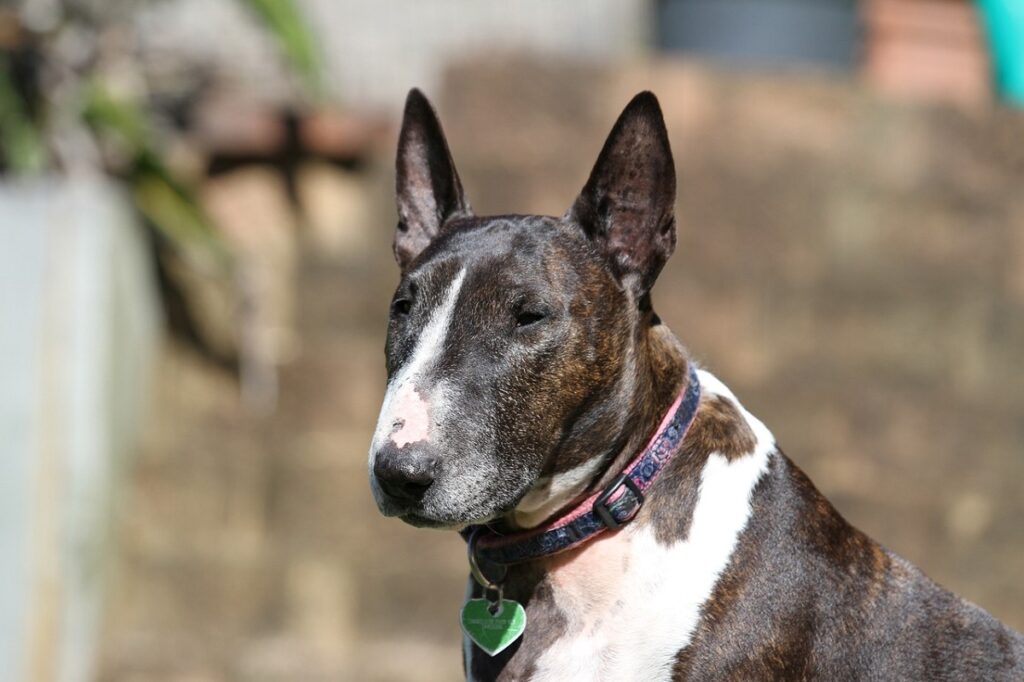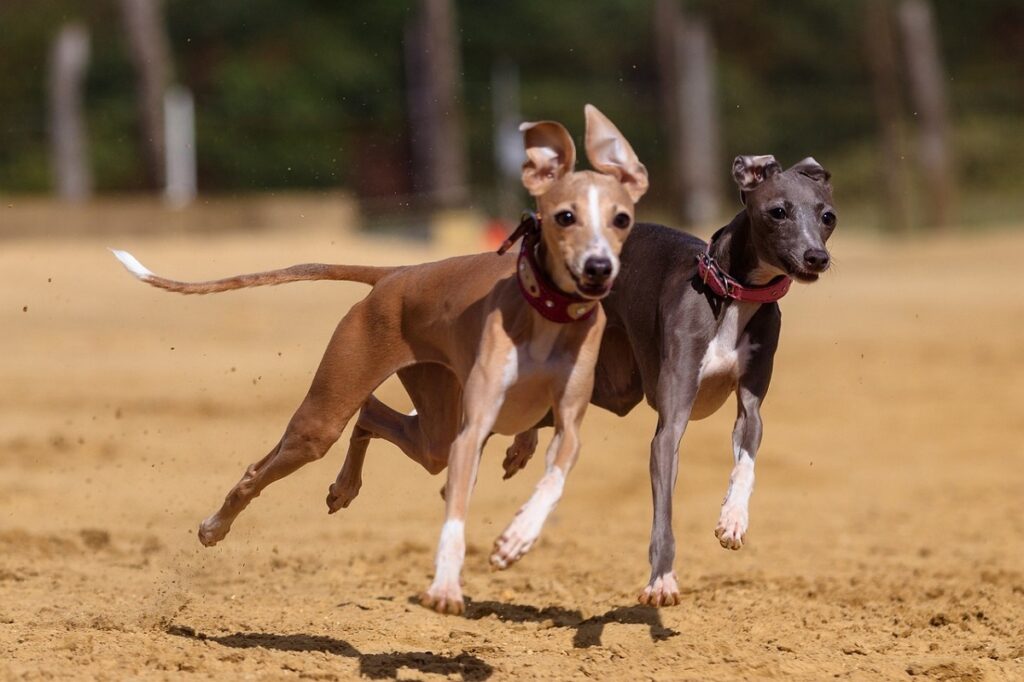Forget squished faces and breathing troubles! If you appreciate canine elegance and good health, explore the world of long-snouted dog breeds. From sleek sighthounds to loyal herding dogs, these 13 breeds showcase the beauty of a classic canine profile. Their longer snouts offer better respiratory function, allowing them to run, play, and pant with ease. Discover the unique personalities and remarkable characteristics of these magnificent long-nosed companions, and you might just find your perfect match.
What does Jimmy Durante have in common with an Afghan hound? They both have long noses. (And Jimmy Durante was probably funnier, but that’s beside the point.) Dogs with long snouts may be funny to look at, but the trait can also make them look sleek and sophisticated.
Collies, Whippets, and Poodles have schnozzes so big it could make King Charles giggle. But have you ever wondered if these breeds have a special purpose for their noses? Do they help them in any way? We’ll get into that.
We’ll also tell you details about their temperament, history, and more. Dogs with long snouts are beautiful in their own way and deserve to be admired and seen for who they are. So let’s sniff around in their business to find out everything we can.
Why Do Dogs Have Long Noses?
Long nose dog breeds are just a thing of nature, right? Not necessarily. They’ve been bred that way for many a millennium, so in this case, selective breeding beats Mother Nature.
A dog’s nose can do many things at once. Long snouts can:
- Figure out what time of day it is
- Predict weather changes
- Detect diseases like cancer and viruses like COVID-19
- Identify dangerous substances like illegal drugs and explosives
- Determine if a being is dead, alive, sick, or wounded
- Find a mate
- Discover predators
Plus, many other things we do know and maybe will never know about. A canine’s nose has two functions: Smelling and breathing. They’re not at all like humans. It’s a well-known fact that dogs have 220 million olfactory receptors, and humans have only 50 million. I guess if we were expected to smell things better, we’d have a long snout.
When a dog sniffs, 12-13% of each breath goes to the olfactory region and is not exhaled. The remainder of the air goes into the lungs.
If that’s not cool enough, dogs can breathe in and out simultaneously, creating a continuous circulation of air.
Dogs also have a “smelling organ” called vomeronasal that detects pheromones, chemicals that animals release for each other in order to reproduce, among other things. (That’s why Bruno jumps the fence when Lucy down the street is in heat.)
Dogs can even smell the passage of time. That’s why hound dogs, the best scent dog hunters, can smell from sniffing the ground which way a person has gone after they’ve been there.
According to the National Center for Biotechnology Information (NCBI), a dog uses their right nostril first to start sniffing. If the smell is unharmful, like food, they shift to use the left nostril. If the smell is threatening or arousing, they continue to use the right nostril.
So how does all of this figure into dogs with long snouts? Think about it. Dogs like greyhounds can be excellent hunters, but you’d never see a pug or a French bulldog going out on a hunt. That’s because their noses are almost flat to their face which makes them brachycephalic, meaning they have a hard time breathing at all, much less smelling things.
Simply put, dogs have been selectively bred for eons for different purposes, and dogs with long snouts have better-smelling capabilities.
Now, let’s talk about those breeds with snouts only a mother could love.
Dogs with Long Snouts
Meet the distinctive long-snouted dogs, a blend of remarkable nasal elegance and extraordinary sensory abilities.
1. German Shepherd
These dogs with long snouts and perked-up ears have superb hunting skills. Their noses assist them in the many jobs they excel at, including:
- Scent detection (drugs, explosives, etc.)
- Search & rescue (SAR)
- Assisting the blind/Service dogs
- Herding
- Watchdogs
- Military work
- Law enforcement (pursuing and detaining criminals, acting as police canine officers)
- Therapy dogs
- Companion animals
Their intelligence is off the charts, and they’re known for their loyalty and eagerness to please their guardian(s). “Courage” is their middle name. Many have died in the line of duty protecting a law enforcement officer or someone in the military.
German Shepherds were originally bred to herd livestock; Captain Max von Stephanitz (1800s) may have had no idea what an impact the GSD would have on mankind and the canine world. He refined and promoted the affectionate breed for 35 years and gave us the incredible dog we know today.
2. Afghan Hound
This fantastically beautiful medium– to large-sized dog (50-60 lbs.) with its flowing hair can look a bit human… Except for that snout. It’s one of the longest in the dog world and fits nicely with their long drop ears. The breed hunts by sight rather than being a scent hound.
Developed in Afghanistan to hunt leopards and gazelles, the Western world wasn’t aware of the breed until the 19th century. Their coats are long, silky, and thick, with the hair moving like a car wash, to the delight of spectators, as they trot around the ring of conformation dog shows.
The regal Afghan hound is surprisingly quick. They’re also one of the oldest domestic dog breeds, probably originating around 4000 BC. When they reached America, many moons later, Mattel introduced one named Beauty as Barbie’s pet. Thank goodness their noses didn’t match.
3. Greyhound
We mostly affiliate greyhounds with speed, but did you know, according to the AKC, they can come in 30 different colors or color combinations? They’re loving companion animals now, many are rescued from being racing dogs, and need daily opportunities to run at full speed. If you’re not an active family, this isn’t the dog for you.
This dog with a long snout and flop-over ears may appear a little goofy-looking, but the love and affection they show family members probably make up for that. Intelligent and independent, they’ll need consistent positive reinforcement training and socialization early and throughout their lives.
The Italian greyhound, the smallest of the sight hounds, shares ancestors with the greyhound. They’re just a smaller version due to selective breeding. Greyhounds love competition and excel at dock diving, lure coursing, and agility. This dog’s heart is as big as its nose.
4. Borzoi
Talk about a snout. This one may beat them all. Everything about them is big, though, from their nose to their legs to their body at 60-105 pounds. Once called the Russian wolfhound, their prey drive is such that they’ll chase just about anything that moves. It wouldn’t be wise to adopt a borzoi if you have smaller pets.
In full stride, they can run 35-40 miles per hour. They were developed in Russia as early as the 1200s to be wolf hunters, so these sighthounds’ long snout came in handy for tracking purposes. They graced the US with their presence in 1889, and in 1891, the breed was recognized by the American Kennel Club (AKC).
5. Poodle
When you think of a poodle, you might think they’re only a boujee prissy-pants, but they’re actually extremely smart and are often listed in the top five most intelligent dogs. They’re also incredible swimmers, and let’s not forget… that long snout.
Among poodle fanciers, the poodle has two types of nose: The long, pointed snout and the teddy bear. The teddy bear type has a short nose that has generally been selectively bred into miniature or toy poodles.
Due to the poodle’s hunting background, their snouts were developed to help them suss out prey by scent. They originated in Germany and are the national dog of France. Okay, maybe they are a little boujee.
6. Whippet
This laid-back, medium-sized breed is affectionate with adults, children, seniors, and other dogs. They may make a beeline for a cat or smaller animal, though, since they were bred in Victorian times to hunt small prey.
Whippets are tall and slim, 25-40 pounds, smaller than a greyhound, and quite thin, but that’s just their body type. The Whippet is related to the greyhound and Italian greyhound but is completely their own breed.
They’ve won Crufts Best in Show (The Kennel Club-UK) several times and come in a myriad of colors. They enjoy competitive sports like agility and flyball but are actually only moderately energetic. A jog or a hike will do them just fine. They exercise in bursts and burn their energy that way. This sighthound is certainly a sight to be seen.
7. Saluki
Sa-what-i? You may not have heard of this breed before, but they’re dogs with long snouts that are crazy fast. They’re thin and have long, drop ears and kind of look like a bald man with their fluffy ears and only a close coat of hair on top.
Salukis can run up to 35 mph, which is probably why Arab tribesmen used them to hunt gazelle. This breed is sturdier than it looks. They might have originated in or around 7000 BC which is before the Pyramids were even in existence.
Salukis were favorites of Egyptian pharaohs and kings, so you could say they had some royalty in them. This sighthound – the “Royal dog of Egypt” – is one special dog.
8. Doberman Pinscher
With their large, cropped, pointy ears (boo for cropping!), you may not even notice that a Dobie has such a long snout. This dog breed is flat-out majestic and probably best known for its black and rust coloring above other colors.
Protective, athletic, and strong, they need just the right guardian who’s experienced with having a large dog. Perfect guard dogs and sought after worldwide for that ability, Dobies can become aggressive and destructive if they’re not well-trained, regularly exercised vigorously, and socialized at a young age.
A relatively young breed, they originated in the late 1800s from a German named Louis Dobermann, who wanted to breed a top guard dog. He surely got his wish. And then some.
9. Pharaoh Hound
This breed in a word: Stunning. Their graceful curves, long necks, and stature truly can’t be missed. They’re another of the world’s oldest domestic dog breeds. They reach back to 4000 BC, and it has been proven by hieroglyphics on Egyptian temples and tombs. The first Pharoah came to the US in 1967.
Today, they’re the national dog of Malta, and as a companion animal, the Pharoah is intelligent, affectionate, and obedient. One of their endearing qualities is the way they blush as their ears redden when they’re happy or excited.
Their coats are sleek and clean, and they don’t need much grooming. This dog with the long snout is great with other larger dogs and adults but may be too strong for young children. Their initial job was rabbit hunting.
10. Collie
You might be able to visualize the collie’s long snout. After all, the TV series “Lassie” put them on the map. But did you know there are two types of collies? The rough, which Lassie was, and the smooth with a short coat.
Their gorgeous long or short coats can come in 10 colors or color combinations. The collie’s love of children allows them to be super family pets. They learn quickly, they’re loyal, and they are super intelligent. They seem to have an innate ability to know what you need from them. Exercise this herding breed daily with aerobic exercise, and you’ll have the perfect dog.
Originating from Scotland, it was actually Queen Victoria who did the work to popularize the collie in the 19th century. This breed has contributed so much to the world.
11. Bull Terrier
These dogs with long snouts are special in many ways… Their looks for one. Their egg/football-shaped heads stand out and make them appear as if they arrived from an alien land.
This “bully breed” is playful, energetic, and can be mischievous with training. Proper obedience classes would be wonderful for the bull terrier if the business you choose accepts “bully breeds.” (What a shame.)
The standard bull terrier weighs 50-70 lbs. but there’s also a separate breed, miniature bull terriers, that was recognized in the 1990s and weighs less than 30 lbs. To leave you with an interesting fact, a bull terrier named Bullseye appeared in Target store advertising for years.
12. Dachshund
The wiener dog! Dachshunds are superior watchdogs and will let you know if something occurs that’s unfamiliar. Or even familiar. Yes, you may have a barker on your hands unless they’re trained to know the difference.
This breed comes in two sizes:
- Standard (16-32 lbs.)
- Miniature (11 lbs. and under)
They also have three coat types:
- Smooth (The standard that most of us know and love.)
- Wire-haired (Looks a bit scruffy but still adorable.)
- Long-haired (Could be confused with a mixed breed since we don’t see them a lot.)
Dachshunds just want to be by your side, and with those long snouts, you can’t miss them.
13. Italian Greyhound
Excellent with family members, strangers, and other dogs, this breed is small at 13”-15” and 7-14 lbs. True sighthounds, they’re not a small version of the regular greyhound, but they share common ancestors and are the result of selective breeding.
They may have been developed as a small game hunter but have definitely been people companions for around 2,000 years. Italian greyhounds love to be in your lap but also have a high prey drive, so their ideal guardian would be someone without other small animals.
They love conformation dog shows and don’t let their snouts get in the way of their self-esteem.
Pros and Cons of Long Snouts
Pros
- They’re less likely to develop respiratory health issues.
- They can pick up scents much better than short-nosed dogs since there are more cells in their nose to do so.
- They’re better at regulating their body temperature in hot climates better than flat-faced dog breeds.
Cons
- They may have more food, environmental, or medication allergies.
- They’re susceptible to certain issues like lung infections since they can breathe in more mold spores.
- They’ll need to be watched for benign nasal tumors and cancers, which are rare but possible.
FAQs
What Dog Has a Super Long, Skinny Snout?
Afghan hounds, borzois, and collies are right up there with the dogs that have the longest, skinniest snouts.
Why Are Borzoi Noses So Long?
They were developed to be wolf hunters; therefore, they need lots of room to sniff them out, and their long snouts are due to selective breeding.
What Dog Has the Best Nose?
The best tracking dog is the bloodhound.
Conclusion
So… long snouts don’t get in the way, they help with smelling things, and they’re beautiful to behold. These breeds just want your companionship and love.
They’re excellent hunters and will be by your side no matter what you get up to. The lessons are: don’t judge a book by its cover, and apparently, long noses are terrific conversation starters.
From the elegant Borzoi to the playful Collie, long-snouted dog breeds offer a unique charm and often come with specific care considerations. Their elongated faces, while aesthetically pleasing, can predispose them to certain health issues, highlighting the importance of responsible breeding and owner education. Whether you’re drawn to their aristocratic appearance or their energetic personalities, researching these breeds thoroughly is crucial. Finding a reputable breeder and understanding their potential needs will ensure a long, happy, and healthy life for your long-nosed companion.



